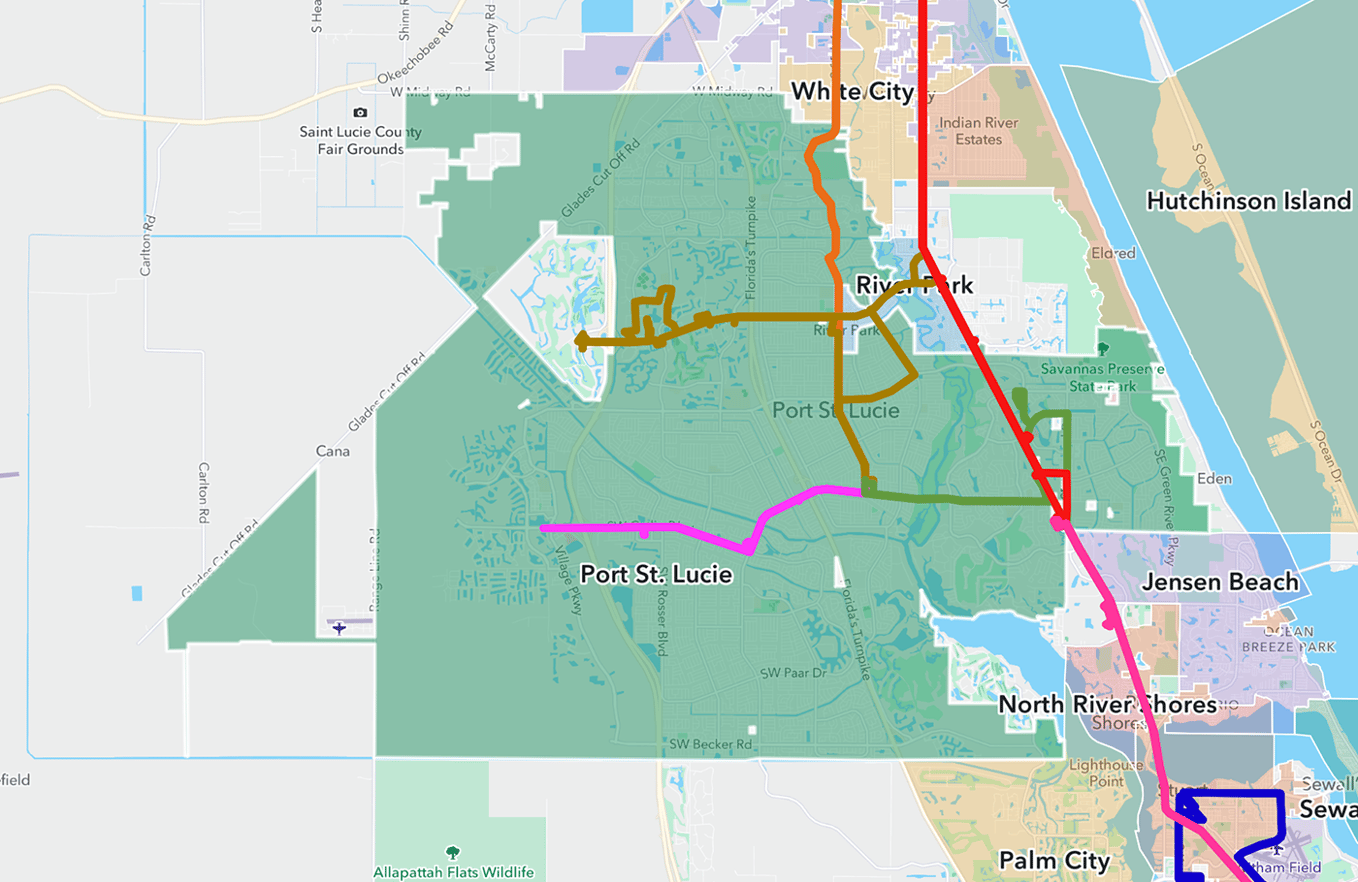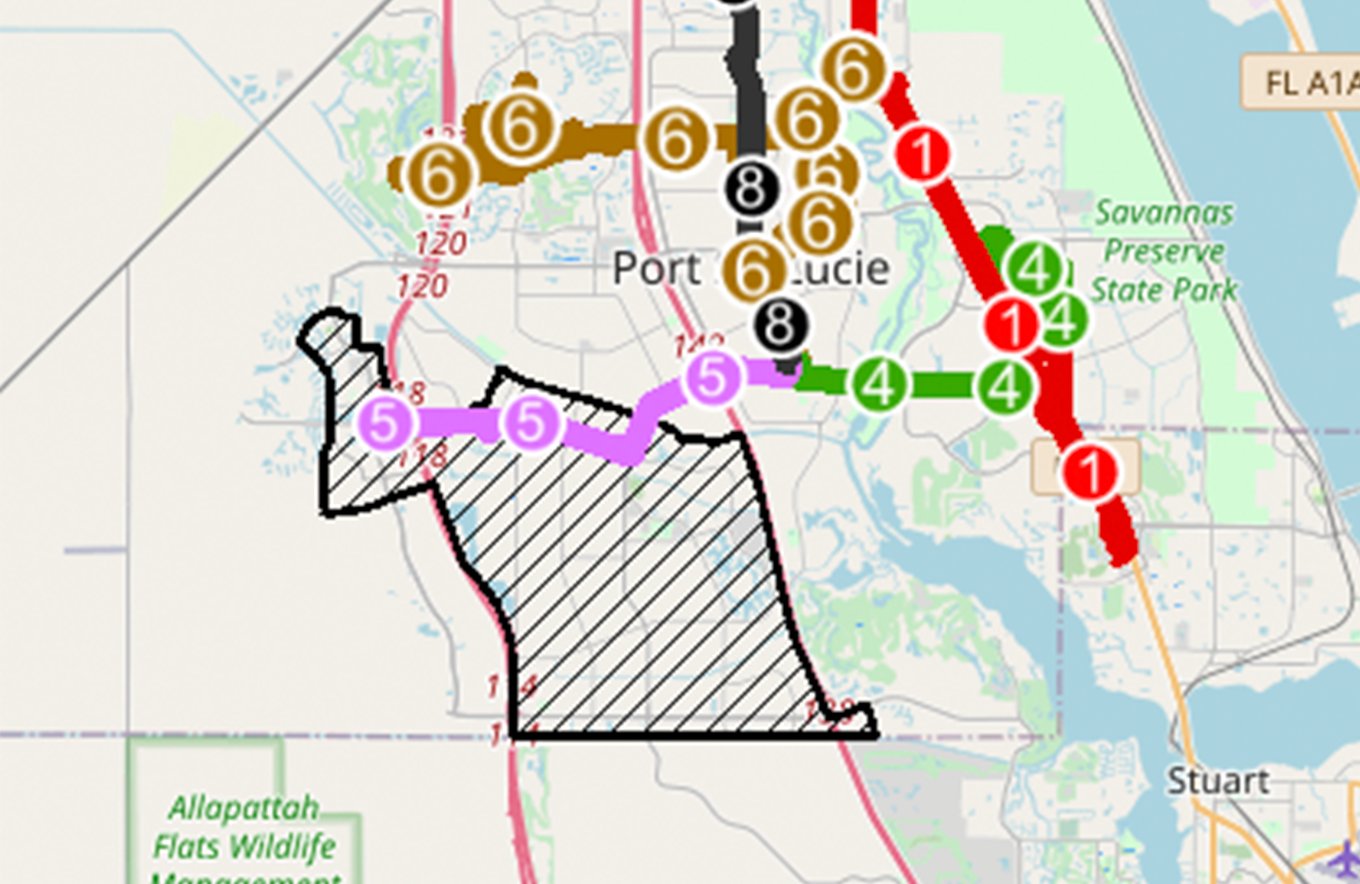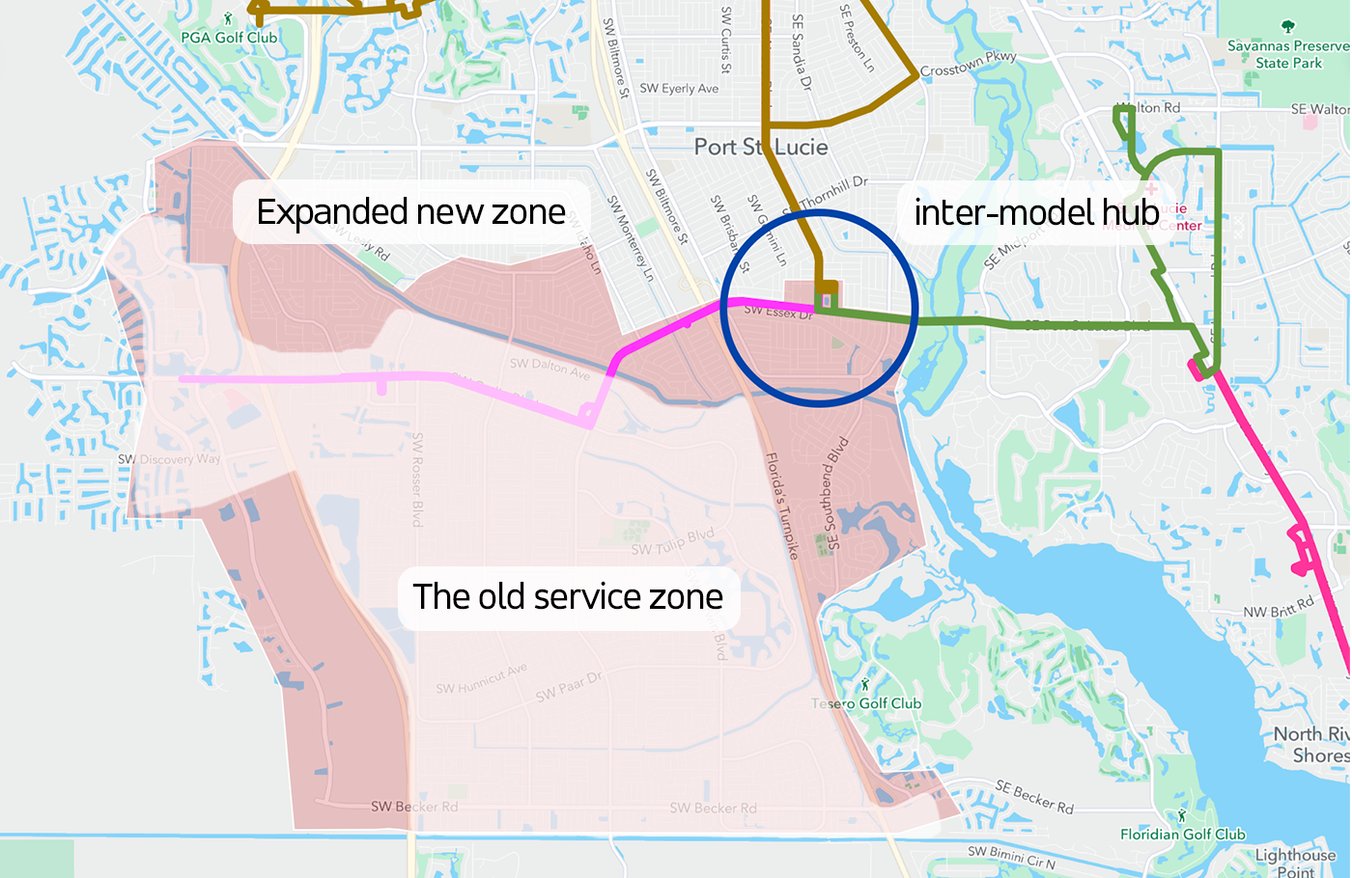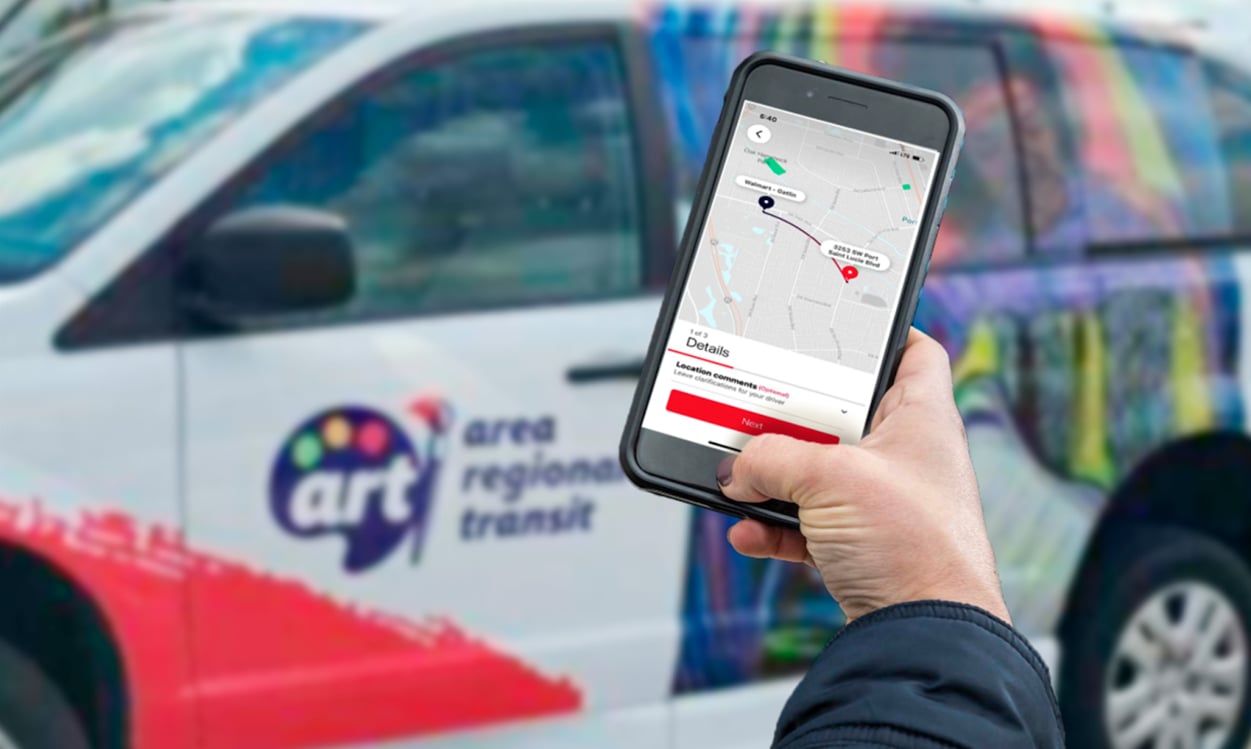For many years, St. Lucie County, with a population of 330k spread over 688 square miles at the heart of Florida’s Treasure Coast, had a mobility challenge: Existing fixed routes could barely catch the county’s sprawling, low-density suburban neighborhoods. In partnership with Via, a TransitTech company powering microtransit services tailored to the needs of local communities and environments, the County introduced on-demand transit to bridge the gap.
As Lenora Copeland, a resident of southern Port St. Lucie pointed out, “The bus works great but getting to it was a problem.” Unable to afford a car or private ride-hailing services, she walked two miles to the nearest transit stop to get to work on the other side of town — that is, until the city introduced on-demand public transit.
 Sprawling fixed routes could barely catch the city’s low-density neighborhoods, making it especially challenging for residents to travel without private cars or ride-hailing services.
Sprawling fixed routes could barely catch the city’s low-density neighborhoods, making it especially challenging for residents to travel without private cars or ride-hailing services.
For the 16% of people in St. Lucie living below the federal poverty line, driving is often not an option. For another 50% of county households, whose income is below the Asset Limited, Income Constrained, Employed (ALICE) threshold, defined as the average income to afford a bare-bones household budget, maintaining the high cost of car ownership is also burdensome. Turns out, affordable, and reliable public transportation options could be lifelines for the majority of community members.
To respond to the high, yet diffuse demand for transit and fill the service gaps in the county, Area Regional Transit (ART) introduced an on-demand, dynamically-routed microtransit program in 2019. Through a mobile app or by calling the dispatch center, people were able to book free on-demand rides within the approximately 10 square miles service zone, to where they need to go, when they need to be there.
 The old zone of the on-demand service.
The old zone of the on-demand service.
This on-demand model showed such promise that transit officials decided to significantly expand the pilot zone to 31 square miles and launch an upgraded microtransit service called Area Regional Transit On-Demand (ART On-Demand).
 The new expansion is providing a better connection with the county’s inter-model hub, circled, where a few of our fixed routes meet up every hour.
The new expansion is providing a better connection with the county’s inter-model hub, circled, where a few of our fixed routes meet up every hour.
Within the newly expanded zone, riders can now reach the Port St. Lucie Intermodal site, a fixed-route transit hub that facilitates access to the entire region. Murriah Dekle, the Transit Division Director of St. Lucie County at ART, observed: “We are now providing even better connections to the neighborhood county in the regional system.”
 The ART On-Demand rides distribution, visualized in Remix. Over 30% of rides started or ended within 300 feet of a transit stop.
The ART On-Demand rides distribution, visualized in Remix. Over 30% of rides started or ended within 300 feet of a transit stop.
Dekle’s observation is borne out in the data: according to the recent ridership stats, over 30% of rides started or ended within 300 feet of a transit stop. “The ridership trends are demonstrating the complementary nature of the service with the fixed route. Now, residents have improved mobility options for better access to opportunities,” added Dekle, with this new mode of transportation and the expanded access to public transit, riders are having the new freedom of moving around the town easily, more affordably.

Data Journalist




